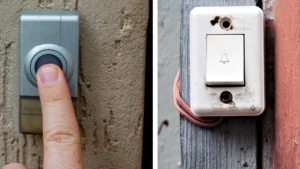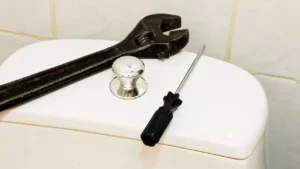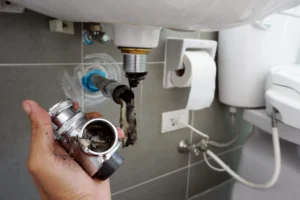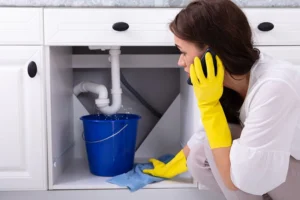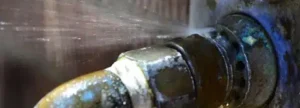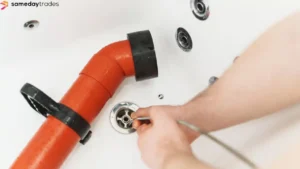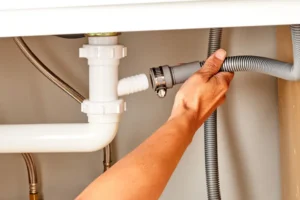Is your water heater not giving you the hot water it used to? Over time, sediment build-up and wear can knock it out of shape. With proper care, though, you can keep it running smoothly for years.
Stick around – these tips will save you hassle and money!
Regularly Inspect for Leaks
Check your hot water heater for leaks often. Small drips near valves, pipes, or the tank can hint at bigger issues later. A puddle around the base of a water heater might mean trouble with the drain valve or tank corrosion.
Run your hands along water pipes and connections to feel for moisture. Look under the T&P valve for any dripping. Even tiny leaks can lead to heat loss and wasted energy over time.
Fixing these problems quickly saves you from higher water bills and future breakdowns.
Flush the Tank Annually to Remove Sediment
Sediment can build up in your water heater over time. This reduces efficiency and damages the tank if left unchecked. Flushing the tank annually is a simple way to protect it.
– Turn off the power or gas supply to your water heater for safety. For electric water heaters, switch off the circuit breaker. For gas models, turn the thermostat to “Pilot” mode.
– Shut off the cold-water supply valve leading to the tank. This stops more water from entering during the process.
– Connect a garden hose to the drain valve at the bottom of your hot water tank. Run the hose end outside or into a bucket to avoid messes indoors.
– Open a nearby faucet with hot water turned on before draining the tank fully. Doing this allows air to flow and helps prevent vacuum lock in pipes.
– Open the drain valve slowly to let sediment and old water escape fully from inside the tank.
– After draining, close the valve securely and disconnect your hose carefully to avoid spills.
– Refill your hot water system by reopening both cold-water supply and turned-on faucet until you see steady water flowing out.
– Once refilled, restore power or light your gas burner once again only after confirming proper operation of safety features like relief valves.
– Test for leaks around fittings while everything heats back up normally! Catch any issues early for easy fixes that save future trouble.
– Repeat this routine maintenance yearly—especially in areas with hard water causing sediment buildup faster than usual!
Test the Temperature and Pressure Relief (T&P) Valve
The T&P valve is a key safety feature of your water heater. It stops too much pressure or heat from causing problems.
– Turn off the energy source for the water heater. Use the switch for electric heaters or the gas supply for a gas water heater.
– Put a bucket under the T&P valve discharge pipe to catch any water. This reduces mess.
– Lift the valve’s lever gently, then let it snap back into place. Listen for a hiss and check if water comes out of the pipe. This shows it’s working properly.
– Look at the pipe after testing. If it drips, it may need replacement.
– Call a professional plumber if you see leaks, hear odd noises, or notice no water flow during testing.
Check and Replace the Anode Rod Every 3–5 Years
The anode rod is a lifesaver for your water heater. It prevents corrosion and helps your tank last longer.
– Inspect the anode rod every 3–5 years. A corroded rod can’t protect the tank properly. If it looks worn or thin, replace it.
– Use a socket wrench to loosen and remove it from the top of the tank. This makes checking easier.
– Choose the right replacement rod based on your water type. For hard water, use a zinc-coated or aluminium rod.
– Coat the threads with plumber’s tape before installing the new rod. This prevents leaks at the connection point.
– Tighten it securely but don’t overtighten, as this could damage the tank’s top.
– Replace old rods promptly if they’re less than half their original size or covered in calcium deposits from sediment buildup.
Following these steps helps prevent rust, keeps heating elements efficient, and ensures a steady hot water supply.
Insulate the Water Heater Tank and Pipes
Insulating your water heater and pipes can save energy and reduce heat loss. It’s a simple task that boosts your hot water supply and lowers electricity bills.
– Use insulation jackets or blankets to wrap the hot water tank. These keep the heat in, helping the system work more efficiently.
– Insulate foam pipe wraps around exposed pipes, especially those leading from the tank. This step prevents heat loss as water travels through the piping.
– Check for gaps or cracks on insulation materials over time. Replace damaged areas to maintain proper coverage and performance.
– Choose products safe for both gas and electric water heaters to avoid safety risks while improving energy efficiency at home.
Adjust the Thermostat to the Recommended Temperature
Set your water heater thermostat to 49°C (120°F). This reduces energy consumption and prevents scalding. Lower temperatures also slow down corrosion, helping your hot water system last longer.
A high setting wastes energy, while a very low one risks bacteria growth like Legionella in the tank. Check the dial on gas or electric water heaters, and make small adjustments if needed.
Always double-check with a thermometer at the taps for accuracy.
Keep the Area Around the Heater Clear of Debris
Clutter near your hot water heater is risky. Items like cardboard, paper, or fabric can catch fire if they’re too close to gas or electric water heaters. Even dust build-up may harm the heating element or block safety features like a pressure-relief valve from working properly.
Allow at least 60cm of clear space around the tank for good airflow and safe maintenance access. Never store chemicals, paints, or flammable sprays nearby—they can increase corrosion risks or lead to dangerous fumes mixing with heat sources.
Keep it clean and hazard-free for peace of mind!
Schedule Annual Professional Servicing
Call a professional plumber once a year. They’ll inspect your hot water system for leaks, sediment build-up, or worn-out parts like the anode rod and heating element. This ensures the heater works efficiently, saving energy and preventing sudden breakdowns.
A professional inspection also checks safety features like the pressure-relief valve. For gas water heaters or electric models, they can spot issues you might miss during DIY maintenance.
It’s a small cost to prevent bigger repairs later!
Conclusion
Taking care of your water heater isn’t rocket science. A bit of effort goes a long way in boosting its lifespan and keeping your hot water flowing. Simple steps like flushing the tank, checking the anode rod, or testing safety valves make all the difference.
Regular maintenance saves you money and headaches down the road. Treat it right, and your heater will keep up for years to come!


